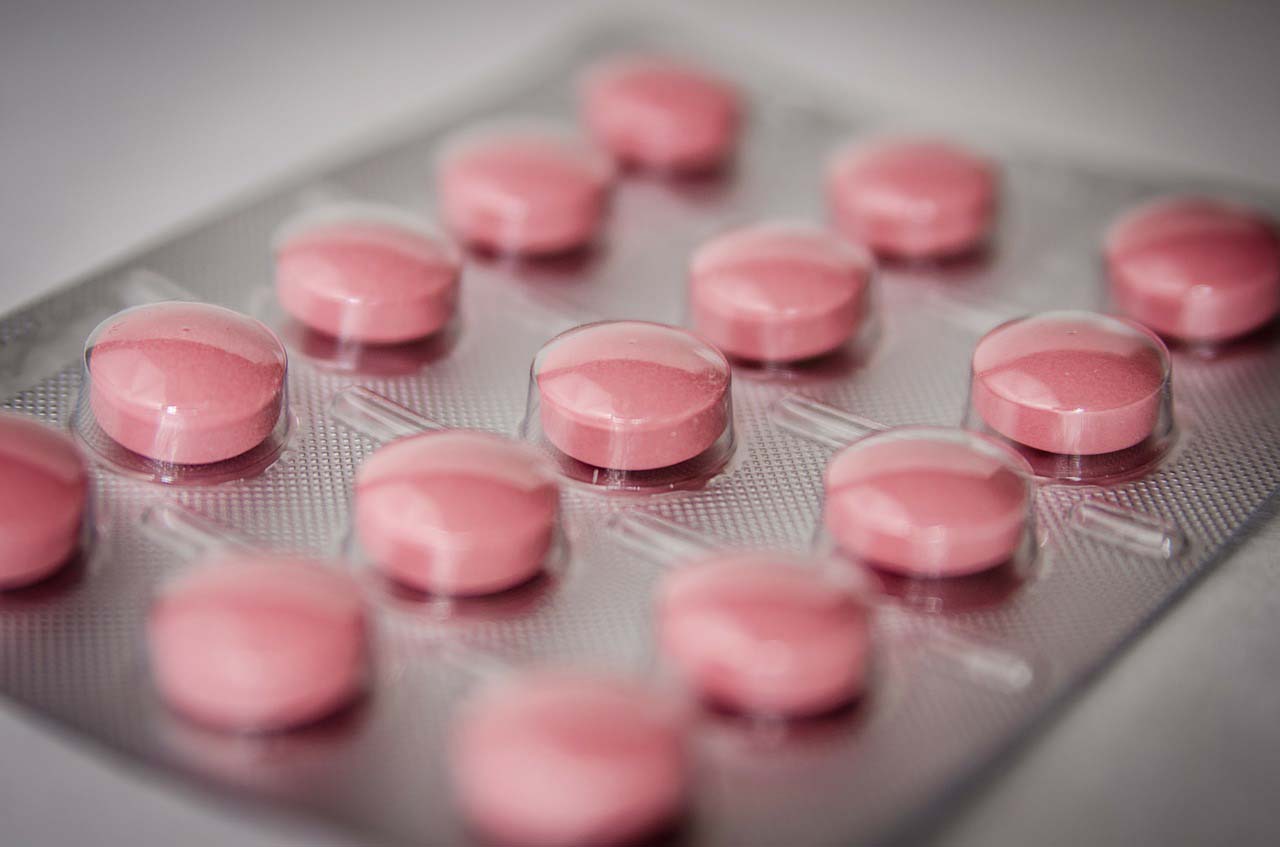At the moment, antibiotics are used to treat a lot of bacterial infections. In the past, diseases caused by bacteria killed a lot of people all over the world.
Researchers were able to do more after penicillin was made. Now, people had a powerful ally who made sure they would live. In the same way, the controlled way these drugs were made completely changed the pharmaceutical industry. Even this invention is one of the 20th century’s most important discoveries.
First mixtures used as antibiotics
In China, soy curd was used to treat infectious diseases about 2,500 years ago. This method is the oldest proof we have that antibiotics work.
There is also proof that mold can be used to treat infections. The Egyptians and Greeks also used this method, which is called antibiosis. In 1877, R. Koch and L. Pasteur found out how a bacillus stopped a bacterium from growing and getting stronger.
Research conducted before Fleming’s discovery
Ernest Duchesne, a French doctor, is thought to have come up with the idea for penicillin. In 1897, he looked into how some molds could kill bacteria. These molds were later used as antibiotics because of their properties.
In 1908, a German doctor and bacteriologist named Paul Ehrlich found Salvarsan, which is now known as arsphenamine. This antibiotic was mostly used to treat syphilis, but it was also used to treat other diseases that spread through the body. Then, in Germany, the modern era starts to take shape around the year 1909, when antibiotic-based therapy starts to try to take hold.
Clodomiro Picado is another doctor who is thought to have been a pioneer in developing penicillin. Between 1915 and 1927, he studies how the fungi called “penicillium” stop the growth of other fungi. Infectious agents like streptococci and staphylococci couldn’t spread because of these.
Alexander Fleming
When Flemming tried to grow a bacterium in a dish as part of an experiment, a small mistake happened: the dish got contaminated with fungi. At that point, Flemming notices that the cultured channel around the mold does not have any bacteria in it. Soon, he figured out that this was happening because the fungus was releasing something that stopped the bacteria from multiplying.
Even though he wasn’t able to clean up the material, his findings were published in scientific journals in 1928. The fungus used in the experiment was from the family Penicillium, so he called his discovery “penicillin.”
Studies after the finding of Alexander Fleming
Together, H. Florey and E. Chain made Fleming’s formula better, making a more pure product. Cecil Paine, one of Fleming’s students, was the first person to use penicillin on newborns in 1930. These had a disease called neonatal ophthalmia, but it went away after they got the medicine. This treatment turned out to work very well. But Paine did not share the results of his investigations with the public.
On the other hand, Chaine, Florey, and Fleming all published their research, taking credit for penicillin’s ability to kill harmful organisms. Given how important the discovery was in 1945, these three scientists were given the Nobel Prize in Medicine.
Golden age of antibiotics, widespread expansion of their use
Without a doubt, the Second World War sped up research and uses of this medicine. Penicillin needed to be improved because it was so important to heal war wounds quickly and keep them from getting sick.
So, this was the time when the first antibiotic was made in a factory and sold to the public. René Dubos made gramicidin in 1939, and it was often used to treat wounds and ulcers.
So, since 1940, these medicines have been made by drug companies. They are made available to everyone, and at the time, the press called them “magic bullets.”
What are antibiotics?
Well, these are strong chemicals that are made to fight the bad things that bacteria cause. The first idea behind these is that they only hurt certain things.
This selective toxicity must be higher than the toxicity of the invading organisms, which in this case are bacteria. So, this is a powerful helper for the body’s natural defense system. Its main job is to watch how the infection grows and spreads until it is gone. That is, the antibiotic can both kill the bacteria and keep them from spreading (inhibiting the proliferation of bacteria).
Classification
They are put into two groups: one group is based on how they work, and the other group is based on how they work. Let’s look at what each one is about.
Classified according to their action
The people in this first group are then split into two more groups.
- In the first group. People in this group are strong against a wide range of organisms. This is why they are called “broad spectrum.”
- The second group is made up of those that have a smaller range and only affect a small number of organisms.
Classified according to their mechanism of action
When it comes to these, they can also be broken down into two main groups.
- The first group is made up of things that kill bacteria. Aminoglycosides (from the streptomycin group), glycopeptides (like teicoplanin and vancomycin), Beta-lactams (like cephalosporins and penicillins), quinolones (from the norfloxacin group), and polymyxins are all part of this group.
- Bacteriostatics are the second group. These are used to stop the growth of bacteria. This group includes sulfonamides, macrolides (from the erythromycin group), chloramphenicol, tatracyclines, clindamycin, and lincomycin.
Indications for the responsible use of these drugs
These should only be used to treat people under close medical supervision. If you are taking the drug, you shouldn’t drink alcohol. When you drink alcohol, you’re more likely to have bad things happen to your body.
In the same way, alcohol stops enzymes from working in the liver, which causes the drug to be too concentrated in the blood. Cephalosporins, metronidazole, doxycycline, disulframa, and erythromycin are some examples.
Follow the doctor’s orders is another important thing to do. Don’t stop treatment, and take the dose that was given. The main reason why many bacteria can’t be killed by antibiotics is that patients stop taking them.
So, the patient’s condition ends up being much worse than it was before the drug was given. This happens because the antibiotic comes into contact with infectious microorganisms, but they are not killed by the antibiotic. So, they fight back, get stronger, and live.
Considerations of the doctor, before applying this drug
How well the drug works for each patient will depend on their unique situation. In general, the doctor treating the patient should think about the following:
- Identify the type of bacteria (antibiogram).
- Dosage, taking into account both weight and age.
- Determine the treatment time.
- Concomitant pathologies.
- Route of treatment administration.
- immunological conditions.
- allergies.
Collateral sequels
Its irresponsible use causes serious incidents. The side effects caused to the body are always indicated in the prospects. The doctor is obliged to inform the patient about them, which they can cause in his organism. Each patient may experience different adverse effects, among the most common we have:
- Diarrhea.
- Vaginal or intestinal candidiasis.
- Loss of appetite or poor absorption of food.
- Constipation and gas.
- Skin rash.
- Neuralgias.
- Disturbance of the nervous system.
In case of any adverse symptom, it is suggested not to suspend the medication. The patient should first consult with the doctor.
The five most widely used antibiotics today
Ampicillin
This is broad-spectrum and belongs to those that are bactericidal. Its main function is to suppress the synthesis in bacteria. It is usually indicated for various infections, namely, respiratory, ear or mouth, those that occur in the urinary system, gastrointestinal, as well as sepsis and infections in the neurological system.
Amoxicillin
It also belongs to the group of broad spectrum. It is very similar to the previous one, since its main function is to annihilate the microorganisms that cause the infection. It is usually commonly indicated to treat bronchitis, pneumonia, ailments of the throat, teeth, stomach, or even the heart, etc.
Penicillin
This is also a broad-spectrum bactericide, effective against a wide variety of microorganisms. In the image we see the chemical structure of the penicillin nucleus.
Tetracycline
This is a bacteriostatic, that is why it works by preventing the reproduction of bacterial microorganisms, but it does not kill them. As it is short spectrum. It is used to combat listeria, bacillus, streptococcus, and staphylococci. Ailments such as otitis, typhus, respiratory or intestinal infections, are usually medicated with tetracycline.
Streptomycin
Bactericide whose main function is to prevent protein synthesis by breaking cell walls. Sometimes it is given to decrease a patient’s intestinal flora before surgery is performed. It allows to treat various ailments.
Some bacteria can’t be killed by antibiotics
When antibiotics are used incorrectly, these microorganisms change, which makes them resistant to the drug. This is why illnesses like pneumonia, gonorrhea, septicemia, and food-borne illnesses are getting worse.
This is a problem that is getting worse all over the world. In places where there are few or no rules about how drugs can be prescribed, it is almost impossible to stop.
When these medicines are used too much, it makes it more likely that infections will come back and kill more people. In fact, even mild and common illnesses could kill again.
Repercussions of careless use
Because some bacteria are resistant to the most common and easy-to-find antibiotics, we have to make ones that cost more. Also, it would take longer to treat the disease. Costs would go up a lot for both the public and private health care systems.
Modern medicine would have to treat these infections, and a lot of them would get out of hand. Surgery, transplants, and chemotherapy would all become even riskier.
Some scientists think that the number of deaths from infections will keep going up in the coming years. That’s why people think they will kill more people than cancer or heart disease.
But it’s likely that we’ve taken antibiotics for a lot of different illnesses over the course of our lives. Most of the time, antibiotics can kill even the worst infections. That’s good news, because it means they still work against many diseases.
Relevant data on antibiotics
It’s amazing how often taking antibiotics is all it takes to stop or get rid of a sickness. It’s easy to think that they can handle anything. But let’s look at some interesting things about them so we don’t use these great allies in the wrong way.
Colds and the flu are not helped by antibiotics
Even though antibiotics are very strong, they do not work for everything. They won’t help with any virus-caused illness. This includes the common cold, the flu, many cases of acute bronchitis, a runny nose, most ear infections, and sore throats that aren’t caused by strep.
Only bacterial infections should be treated with them
Antibiotics kill bacteria, so they can only fight infections caused by bacteria. They don’t work against viruses or infections caused by viruses, and they might even do more harm than good. If you take antibiotics when you don’t need them, you could get an infection that can’t be treated with antibiotics and have bad side effects.
Some side effects can be bad
Even though not everyone will have all of the side effects of antibiotics, you should still be aware of them. Some of the side effects are severe diarrhea, resistance to antibiotics, and allergic reactions like rashes, blisters on the skin, swelling in the neck and throat, and trouble breathing.
Nothing can be treated with antibiotics
There is no one antibiotic that works for everyone. Each kind of infection is caused by a different kind of bacteria and needs a different kind of antibiotic. It’s important to pick the one that fits your infection the best. If you take the wrong one, it won’t work as well and could have bad side effects.
They can make your body less healthy
Antibiotics kill all kinds of bacteria and can’t tell the difference between good and bad bacteria in your body. This means that it will kill some of the good bacteria your body needs to fight off infections and keep your immune system strong and healthy.
If someone misuses or overuses antibiotics, they are more likely to get sick again and are more likely to get bacteria that can’t be killed by antibiotics.
Your chances of being overweight go up
Antibiotics throw off the balance of good and bad bacteria in the body’s digestive system. They can even change the balance of bacteria in your gut for good. In this way, they can also make you gain weight that you don’t want. They can also send confusing signals to hunger hormones that make you feel more hungry.
Not a good idea to use old antibiotics
After getting sick, people often keep any extra antibiotics “just in case.” The idea is that you can get sick again at any time, and these antibiotics might help if that happens. But, as was already said, different bacteria cause different kinds of diseases. Since there is no antibiotic that works for everything, different illnesses may need different antibiotics.
You might think that taking an old antibiotic won’t hurt, but you could build up a resistance to it, which means it won’t work when you really need it. You could also get any of the above serious side effects.
Conclusions
Antibiotics are a very strong and very effective way to treat a wide range of infections. But there’s no one-size-fits-all solution, and they don’t help with diseases and infections that are related to them. They kill bacteria, plain and simple. Knowing these things about antibiotics will help us get the most benefit from them.
You can also read
If you are interested, you can also read Entertainment, Numerology, Tech, and Health-related articles here: Subnautica, Knives Out 2, Best Basketball Anime, 13 Regions for Astronauts to Land on the Moon, Red Bottom Shoes, StoriesDown, Meaningful Learning, E-learning 2022, She-Hulk release date, Overlord Season 5, Samsung Galaxy Z Fold 4 Review, Feogi, Laal Singh Chaddha Review, Baki Season 5, Bflix, Leonardo DiCaprio Sneakers, Hurawatch, Salman Rushdie, Accessibility Apps for Android, Best Jobs in the Metaverse, QueenslandMax, Shower Standing Handle, August 11 Zodiac, How to pass a drug test, How to Roll a Joint, iFun, Emerald Chat, How to Play Mancala, August 8 Zodiac, OnePlus 10T Review, Jilo Virals, August 4 Zodiac, Findsnap, Tomb Raider Anime, Netflix August 2022 Schedule, Animixplay, Upcoming Marvel Movies 2022, July 31 Zodiac, Best Lily Collins Movies, Notepadqq, Flaxseeds with Milk
Benefits, Imginn, Snaptik, Picuki, Alexis Clark Net Worth, Black Panther 2, Marvel Echo Release Date, Frozen Fruit Recipes, Black Tourmaline, Webtoon XYZ, Fastest VPN for Android, IFVOD, XXXX Dry Review, Highest Grossing Indian Movies of all Time, Highest Grossing Movies of All Time, Rush Limbaugh net worth. Gotham Season 7, Parag Agrawal Net Worth, Tara Reid Net Worth, Blonde Trailer, Fastest VPN for PC, Highest Paid CEO in India 2022, Highest paid athletes 2022, My5 TV Activate, Kissmanga, Highest Paid CEO 2022, Grey’s Anatomy Season 19, Alexa.com Alternatives,
The Resident Season 6, Kraven The Hunter, One Punch Man season 3, The Resident Season 5, Yellowstone season 5, Ozark season 4 part 2, How to Remove Bookmarks on Mac, Outer Banks Season 4, How to watch NFL games for free, DesireMovies
Apart from the above articles, you can read more
6streams, 4Anime, Moviesflix, 123MKV, MasterAnime, Buffstreams, GoMovies, VIPLeague, How to Play Music in Discord, Vampires Diaries Season 9, Homeland Season 9, Brent Rivera Net Worth, PDFDrive, SmallPDF, Knightfall Season 3, Crackstream, Kung Fu Panda 4, 1616 Angel Number, 333 Angel Number, 666 Angel Number, 777 Angel Number, 444 angel number,
Bruno Mars net worth, KissAnime, Jim Carrey net worth, Bollyshare, Afdah, Prabhas Wife Name, Project Free TV, Kissasian, Kickassanime, Moviezwap, Jio Rockers, Dramacool, M4uHD, Hip Dips, M4ufree, Fiverr English Test Answers, Fiverr SEO Skill Test, NBAstreamsXYZ, Highest Paid CEO, The 100 season 8, and F95Zone.
Thanks for reading. Stay tuned!





































